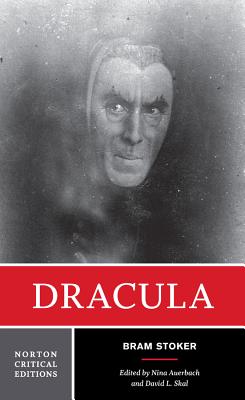Dracula
Bram Stoker

I decided to read this book because I am running a Dungeons & Dragons campaign of “Curse of Strahd,” in which the primary antagonist (whom I get to play!) is Strahd von Zarovich, a vampire heavily influenced by the lore around Dracula. I think I got some good inspiration out of it!
For a book written at the end of the nineteenth century, I found this to be surprisingly readable and modern in feel. It is written in an engaging epistolary sort of style, where the content primarily consists of the diaries of about 5 lead characters, interspersed with some letters and newspaper clippings. The alternation between different characters' diaries gives the reader a nice variety of standpoints from which to consider the material.
The first section of the book, in which Jonathan Harker visits Castle Dracula in Transylvania to assist with a real estate deal, is five-star material in my book. We get a lot of face-time with Dracula himself, who is a fascinating character, and the Gothic horror atmosphere is really rich. There is quite a bit of interesting subtext regarding freedom, obligation, hospitality, and business, and the plot is quite suspenseful because even though I was pretty sure Dracula would be defeated in the end, I had no idea whether Jonathan Harker himself would live or die.
The rest of the book is still pretty good, but I would say it really drops off. The action moves to England, where Dracula has moved, and follows the set of characters trying to track and kill him. The book loses a lot of excitement in this section because there is virtually no more face-time with Dracula. The Gothic horror atmosphere is still maintained reasonably well, but I think something is lost with the addition of Professor Van Helsing, who is reasonably informed about the ins and outs of vampirism. Part of the attraction of the Transylvania section is Jonathan Harker’s utter lack of knowledge about the nature of his captor, which means he has to engage more in order to learn more. I initially really liked the character of Mina Harker, and particularly the fact that she compiles everyone’s disparate diaries and deduces the movements and location of Dracula. But she also loses something in the back half of the book, as Stoker reduces her to a very passive role with a boring mystical connection to Dracula. There is quite a bit of repetition when it’s already pretty clear where things are going, and the final showdown with Dracula is just a complete disappointment.
The saving grace of the second part of the book is Renfield, the insane asylum patient of Dr. John Seward and secret devotee of Dracula. He’s just an incredibly charismatic character, both in-world and on paper. He vacillates between apparent madness and lucidity in a way that makes you feel something deeper is there below the surface. His obsessions with flies and spiders are just the right degree of creepy, and the relationship between Seward and Renfield is a nice one. I found his ultimate fate pretty affecting.
Overall, I would mostly recommend for people to read the Transylvania section and treat it as a stand-alone work (it’s a lot more fun to imagine an arbitrary supply of Drac stories out there, kind of like Sherlock Holmes).